Americans have generally been taught a whitewashed version of our history. The story behind Thanksgiving Day and the first Thanksgiving feast is no different: The pilgrims of Plymouth, Massachusetts were struggling to establish their colony and grow food in the harsh terrain and climate when the virtuous, noble local Indigenous population took pity on them. (As an aside, I was never taught the actual name of the “tribe,” which happens to be the Wampanoag. Leaving out this type of historical detail can generalize the narrative assuming that all Indigenous people are essentially the “same.”) The Wampanoag taught the pilgrims how and what crops to farm, culminating in a feasting celebration of gratitude, thanks, and friendship between the two groups, hence leading to what we refer to as the federally recognized holiday of Thanksgiving Day.
In actuality, the events leading up to 1863, when President Lincoln first officially recognized the regular occurrence of Thanksgiving Day, were bloody, disease ridden, and had occurred over and over again for hundreds of years prior. The effects of colonization and control over trade routes and goods between French and English traders and colonist and regional Indigenous tribes caused centuries of war and death, most of which heavily impacted the Indigenous tribes of New England. When discussing historical and current events it is important to identify the groups or individuals who held, or hold, the most power. In this particular case, it was the European colonizers’ belief in fulfilling their “God-given right” to the land and its resources often through the use of guns, disease, enslavement, and deceit.
The first declared holiday of “Thanksgiving” occurred in 1637 during the time period that is now referred to as the Pequot War. John Winthrop, the Governor of Massachusetts Bay Colony, declared the day after the Mystic Massacre of the Pequot to be “a day of Thanksgiving, thanking God that they had eliminated over 700 men, women, and children.” The second declaration occurred the following year on July 29, 1637 by then governor William Bradford who stated, “For the next 100 years, every Thanksgiving Day ordained by a Governor was in honor of the bloody victory, thanking God that the battle had been won” to commemorate the end of the Pequot “War.” This declaration occurred after another massacre of the Pequot people the day before. By this point, general “days of thanksgiving” were declared by English colonists to celebrate the successful massacre of Indigenous communities and to honor the “victories” ordained by God. By 1863, Thanksgiving Day was scheduled by individual state governance, and typically at different times throughout the year, mainly in New England and Northern states.
In 1970, Aquinnah Wampanoag leader Wamsutta Frank James was asked to speak during the 350th anniversary of the Mayflower landing, and he wanted to take this moment to highlight the bloody history of colonization on Indigenous tribes in New England. When event organizers learned the details of his speech, they asked him to write a new one because it was “too inflammatory.” Wamsutta refused and, deciding that this history was too important to ignore, partnered with local Indigenous people to create a “National Day of Mourning” as an Indigenous response to Thanksgiving Day.
Held every year on the fourth Thursday of November (yes, that is the same day as Thanksgiving), many Indigenous tribes from around New England gather at noon on Cole’s Hill above Plymouth Rock in Plymouth, Massachusetts for speeches of “remembrance and spiritual connection, as well as a protest against the racism and oppression that Indigenous people continue to experience worldwide.” Rallies and marches through the historic downtown of Plymouth follow the gathering. It is a time of honoring Indigenous ancestors, exhibiting the strength and resilience of Indigenous people, while being a time of listening for non-Indigenous folks.
Researching for the details of this blog post has given me the opportunity to gain a better understanding of the Indigenous experience, which is important for me personally because my uncle is of Mohawk descent. Though I know some of his life experiences and once did an elementary school project on his culture and the tribe he belongs to, the aspects of his life story never really left an impact on how I critically thought about and engaged in the history I learned in school. I never really questioned the information I was learning (that isn’t entirely true… I was the loud, annoying student in the middle of the classroom going “Why? For what purpose?”). Whatever I was told to know, I would memorize it, spit it back out to get my A, and move on to the next item to “learn.”
The older I become, however, the more awareness I have gained, and the more questions I find myself asking. Thanksgiving has always been a time for our family to come together to cook and enjoy food, while reflecting on the things we are thankful for, something we seem to do more and more the older we get. Pilgrims and Indigenous relations rarely, if ever, factor in. However, I feel that I now have a better understanding of historical events and can better engage with family members and my own kids when discussing what Thanksgiving is and is not, and for that, I am thankful.
Resources
Wampanoag history, Thanksgiving, and the lead up to King Philip’s War: https://youtu.be/Yzmp383dwjo
Interactive map of tribal lands: https://native-land.ca/
If you want to learn more about the specific reasons why President Lincoln established Thanksgiving Day as a federally recognized holiday, check out the following resources:
Opportunities for Reflection
- How do you celebrate Thanksgiving Day? In what ways can your celebration stop the perpetuation of the Thanksgiving myth and include more of the Wampanoag experiences?
- How do you talk about Thanksgiving in your classroom and with your students? Is it an accurate representation of what actually occurred? If not, how can you adapt your approach while scaffolding for age? Search out alternative curriculum and invite Indigenous guest speakers into your classroom.






